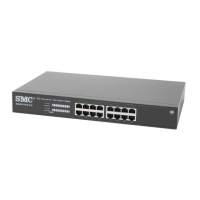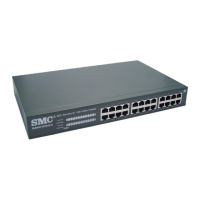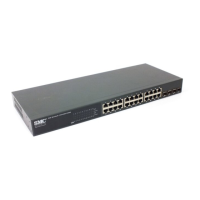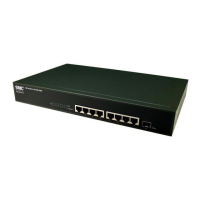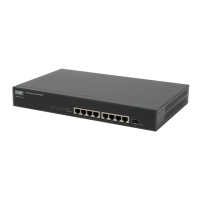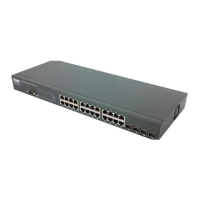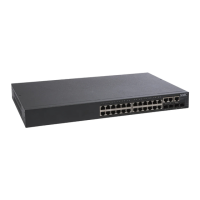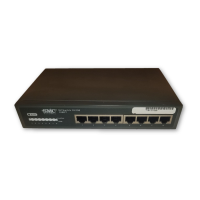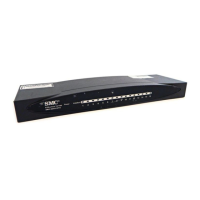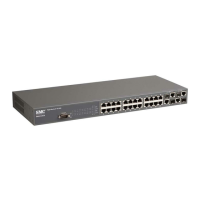C
HAPTER
4
| Configuring the Switch
Configuring UPnP
– 196 –
CONFIGURING UPNP
Universal Plug and Play (UPnP) is a set of protocols that allows devices to
connect seamlessly and simplifies the deployment of home and office
networks. UPnP achieves this by issuing UPnP device control protocols
designed upon open, Internet-based communication standards.
The first step in UPnP networking is discovery. When a device is added to
the network, the UPnP discovery protocol allows that device to broadcast
its services to control points on the network. Similarly, when a control point
is added to the network, the UPnP discovery protocol allows that control
point to search for UPnP enabled devices on the network.
Once a control point has discovered a device its next step is to learn more
about the device and its capabilities by retrieving the device's description
from the URL provided by the device in the discovery message. After a
control point has retrieved a description of the device, it can send actions
to the device's service. To do this, a control point sends a suitable control
message to the control URL for the service (provided in the device
description).
When a device is known to the control point, periodic event notification
messages are sent. A UPnP description for a service includes a list of
actions the service responds to and a list of variables that model the state
of the service at run time.
If a device has a URL for presentation, then the control point can retrieve a
page from this URL, load the page into a web browser, and depending on
the capabilities of the page, allow a user to control the device and/or view
device status.
Using UPnP under Windows XP - To access or manage the switch with the
aid of UPnP under Windows XP, open My Network Places in the Explore file
manager. An entry for “SMCGS10P-Smart” will appear in the list of
discovered devices. Double-click on this entry to access the switch's web
management interface. Or right-click on the entry and select “Properties”
to display a list of device attributes advertised through UPnP.
PARAMETERS
These parameters are displayed:
◆ Mode - Enables/disables UPnP on the device. (Default: Disabled)
◆ TTL - Sets the time-to-live (TTL) value for UPnP messages transmitted
by the switch. (Range: 4-255; Default: 4)
◆ Advertising Duration - The duration, carried in Simple Service
Discover Protocol (SSDP) packets, which informs a control point or
control points how often it or they should receive a SSDP advertisement
message from this switch. Due to the unreliable nature of UDP, the
switch sends SSDP messages periodically at the interval one-half of the
advertising duration minus 30 seconds. (Range: 100-86400 seconds;
Default: 100 seconds)
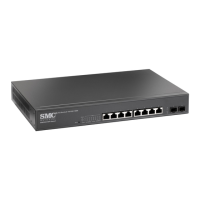
